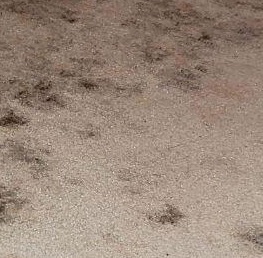Mold discolors surfaces because of the pigments produced by the mold as it grows and the enzymes it secretes to break down the organic material it feeds on. The discoloration is a result of several factors:
- Pigments: Mold comes in a variety of colors, such as green, black, blue, or white. These colors are due to pigments produced by the mold itself. As mold grows on a surface, these pigments can be deposited, causing visible discoloration.
- Enzymes: To break down organic material for consumption, mold secretes enzymes that can cause chemical reactions, leading to discoloration of the surface. These enzymes can cause a breakdown of the material’s color, texture, or even its structural integrity.
- Material degradation: As mold feeds on organic material, it can cause the material to degrade over time. This degradation can lead to further discoloration, weakening of the material, and eventual decay.
- Staining: Mold can also cause staining, which is a result of the combination of pigments, enzymes, and material degradation. This staining can be difficult to remove, especially on porous surfaces, as the mold can penetrate deeply into the material.
The extent of mold discoloration and staining depends on the type of mold, the material it’s growing on, and the duration of the mold infestation. To prevent mold discoloration, it’s essential to address any moisture issues and maintain proper ventilation in your home or building. If mold is already present, remove it promptly and fix the underlying cause to avoid further damage and discoloration.

